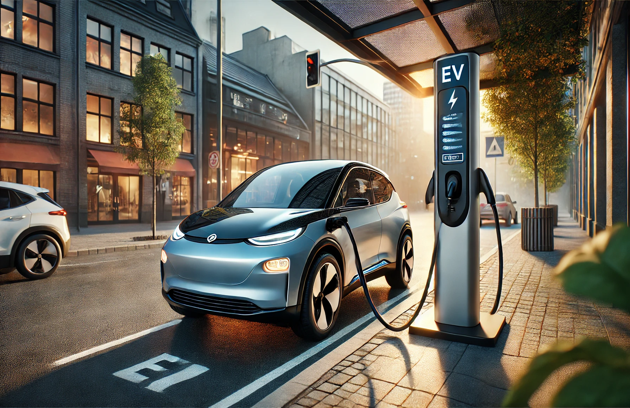Understanding EV Charging Costs
As the shift towards electric vehicles (EVs) gains momentum, understanding the cost of charging them has increased significantly. The components driving these costs are multifaceted, encompassing everything from the electricity rates in your area to the type of charger used.
Initiating or enhancing your knowledge in this domain begins with looking at the resources required to charge EVs, which can vary widely even within a single metropolitan area based on local infrastructure differences. Electricity tariffs stand at the core of this cost structure, fluctuating geographically and temporally, reflecting differential demand and supply conditions.
For a comprehensive understanding, potential EV purchasers should familiarize themselves with these factors early to make informed financial decisions regarding vehicle operation. What initially might seem daunting can be simplified through strategic planning and leveraging available technologies, thus leading to smarter energy consumption and considerable savings over the vehicle’s lifetime.
Factors That Influence Charging Costs
Various shifting factors shape the economic landscape of EV charging, each playing its role in determining the final calculation of an owner’s energy bill. Different charging stations, from fast to home-based, represent specific price points. While fast chargers offer speed and convenience during charging, they can lead to higher expenses compared to standard home units.
Another vital element is geographic variation in energy pricing, which can influence local regulatory environments, resource availability, and provider competition. Moreover, the time of day adds a layer of complexity—most utility companies implement time-of-use rates that increase during peak hours when there is a high demand on the grid. Paying attention to these windows can deliver massive cost reductions, allowing electric vehicle users to capitalize on lower rates.
Public vs. Home Charging
The debate between using public or home charging facilities is critical for any EV owner, embodying a classic case of convenience versus cost. Home-based charging stations are typically more cost-efficient, primarily due to the advantage of charging during off-peak hours at stable residential rates. This setup means owners do not face the unpredictable pricing sometimes found with public stations.
Public charging stations offer an essential service by providing on-the-go charging solutions; however, they generally incur higher costs. Added surcharges and increased rates for fast charging can contribute to a steeper bill.
Understanding these differences is crucial, particularly for those using electric vehicles for long-distance travel, where public charging becomes unavoidable. For the average commuter, combining home charging with strategic use of public stations could present a balanced approach, ensuring that drivers remain economical without sacrificing the ability to travel freely over vast distances.
Time-of-Use Pricing Impact
Time-of-use (TOU) pricing schemes are proven tools for electricity companies to manage demand and supply. These schemes exert a significant impact on electricity costs for EV owners. By offering lower rates during off-peak periods—such as nighttime and early morning—utility companies incentivize users to alter their charging patterns accordingly.
Conscientious users can enjoy considerable savings by taking advantage of these lower rates. This requires manual adjustments or smart chargers that automatically respond to price fluctuations. The effect of TOU pricing extends beyond cost savings; by reducing peak load demand.
The stress on the overall energy grid is lessened, contributing to a more stable and sustainable energy system. Comprehensive knowledge of these patterns, often provided by utility companies, coupled with judicious planning, can guarantee an intelligent approach to energy consumption.
Future Cost Predictions
The road ahead for EV charging costs has challenges and promising developments. While the initial transition to EVs might present cost concerns, particularly in areas with underdeveloped infrastructure, the future is poised to swing towards affordability driven primarily by technological advancements.
Economies of scale and technological breakthroughs in battery efficiency and storage are expected to drive these costs down. Furthermore, increased competition among utility companies could lead to more competitive pricing strategies. As renewable energy sources—such as solar and wind—become more prevalent, energy prices will likely stabilize or decrease, benefiting EV consumers.
Additionally, anticipated governmental policies supporting green technology transitions are expected to supplement these developments through incentives and subsidies, making electric mobility environmentally responsible and financially prudent.
How to Save Money on EV Charging
Being an informed EV owner and leveraging available resources can unlock significant savings in charging costs. A primary method is the installation of home charging stations equipped with smart capabilities. These stations allow for automated charging sequences during off-peak electricity demand times, maximizing the benefits offered by lower energy prices.
- Exploring different electricity programs and selecting the most suitable plan for your needs can reduce expenditures.
- Keeping abreast of local incentives or rebates is critical for offsetting costs associated with charging infrastructure installation and operation.
- There are mobile applications designed to pinpoint free or discounted charging stations, reducing reliance on costly public chargers
- Enrollment in community-supported renewable energy programs can provide financial incentives while supporting sustainable practices.
While requiring some upfront research, these strategies promise longer-term savings and an enhanced understanding of energy usage.
Final Thoughts
Understanding the economics of EV charging necessitates both diligence and adaptability. The rapidly evolving landscape calls for electric vehicle owners to stay informed about the influencing factors and emerging trends that define this domain. By adopting conscientious pricing and energy strategies, EV owners can not only alleviate the direct burdens related to charging costs but also contribute positively to broader societal transitions towards sustainable modes of transportation. These practices will ensure that the electrified journey remains financially and environmentally forward-thinking.
Also Read:

